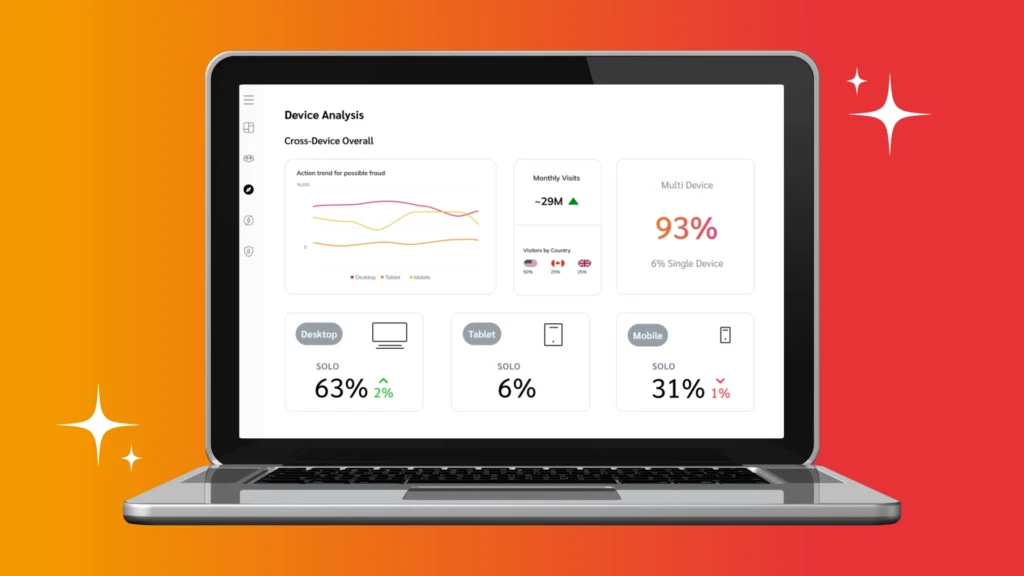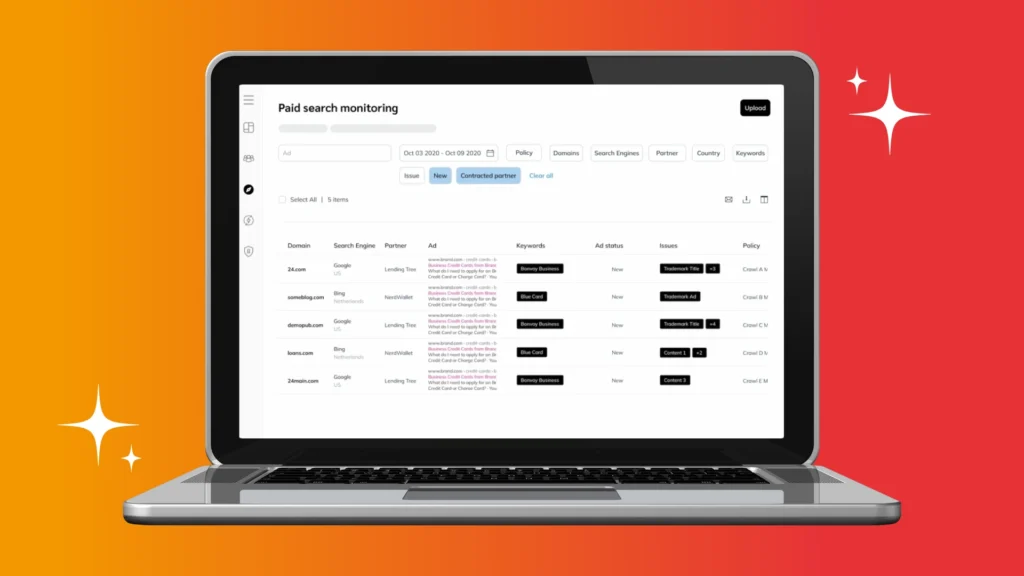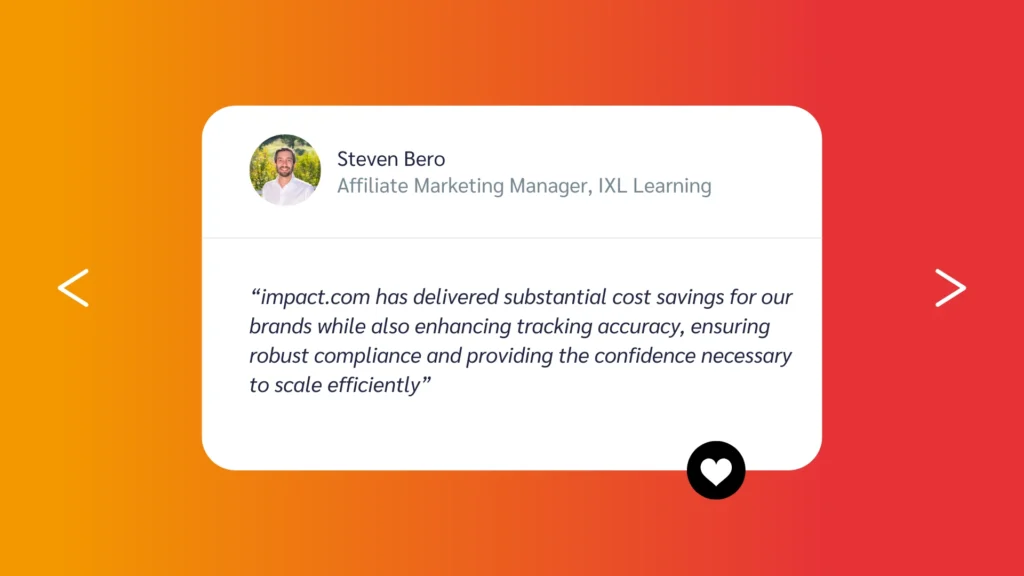Attribution and measurement rank as the top investment priority for 2025 among US brand and agency marketers. Why? Today’s consumers navigate an intricate web of online ads, social platforms, and in-store experiences before purchasing.
Capturing the influence of every touchpoint has never been more challenging—or vital.
Accurate tracking is the thread that ties everything together for brands, especially those running affiliate programs. Beyond splitting commissions, it lets you pinpoint which partners truly drive results, uncover hidden areas for growth, and shape data-backed strategies that deliver measurable ROI.
When tracking goes wrong, the consequences can quickly pile up:
- Misallocated commissions.
- Missed opportunities to scale high-performing affiliates.
- Budget wasted on low-value traffic.
- Erosion of trust with affiliate partners.
Establishing the core pillars of affiliate tracking can cut through the complexity and turn performance insights into actionable steps.
This guide will show you how to design a tracking system that empowers your affiliate program to scale smarter and perform better, from defining KPIs to staying compliant with evolving regulations.
The key considerations when building a smarter affiliate tracking system
Building a successful affiliate program isn’t just about recruiting partners and setting commission rates but measuring and refining. Whether you’re just starting or looking to improve your existing program, these five pillars will help you establish a robust affiliate performance-tracking strategy.
1. Understand the metrics that matter most
Before tracking anything, ask yourself: What does success actually look like?
Saying you want to “increase sales” is too vague. You need clear, measurable KPIs that tell you what’s working, what’s not, and where to adjust. Some essential KPIs for affiliate tracking include:
- Conversion rate: How many affiliate-referred visitors buy?
- Revenue per affiliate: Which partners bring in the most sales?
- Customer lifetime value (CLV): Are affiliates attracting high-value customers or one-time buyers?
- Average order value (AOV): How much do affiliate-driven customers spend?
- Click-to-conversion rate: Are clicks turning into actual purchases?
- Return on ad spend (ROAS): Is every commission dollar generating real revenue?
Once you define your KPIs, set benchmarks. This view will give you a roadmap, helping you reward high performers, fix weak spots, and scale strategically.
2. Invest in scalable tracking solutions
Affiliate tracking is only as strong as the tools behind it. Use outdated software or patchy analytics, and you’re working with insufficient data—leading to bad decisions. Fortunately, businesses have access to a variety of tracking solutions tailored to optimize program performance:
- Partnership management platforms [such as impact.com]: Centralize tracking, reporting, and payments while enabling partner growth.
- Affiliate networks: Connect businesses with affiliates and simplify commission payments and reporting.
- CRM-integrated systems: Combine affiliate tracking with customer management for deeper insights.
- Standalone SaaS tracking tools: Flexible, feature-rich platforms without reliance on external networks.
- E-commerce plugins: Add-ons for platforms like Shopify to enable basic affiliate tracking.
- Custom-built systems: Proprietary solutions tailored for unique business needs.
- Third-party analytics tools: General platforms like Google Analytics offer limited affiliate tracking.
When selecting a tracking solution, verify it includes key capabilities to enhance accuracy, transparency, and results.
Multi-channel tracking visibility
Platform tools such as impact.com’s cross-devise tracking monitor affiliate performance across devices, traffic sources, and marketing platforms to maintain accurate attribution.

The impact.com cross-device identity graph figures out which devices belong to the same user and links them.
Real-time data reporting
Access up-to-the-minute insights on clicks, conversions, and commissions for precise decision-making. B&Q enhanced its strategy by using Data Lab to produce bespoke reports tailored to its KPIs. This approach provided an in-depth analysis of metrics such as first-party versus third-party sales, leading to a 30 percent increase in sales.
Comprehensive performance insights
Measure performance at every step of the customer journey to understand each partner’s true value. Brand Collective used the Optimize reporting suite to identify activities driving incremental sales. This sharper understanding contributed to a 34 percent year-over-year increase in partnership revenue.
Fraud detection capabilities
Safeguard your program by flagging unauthorized activity, such as unapproved placements or false clicks. PUMA leveraged impact.com to add protective clauses in partner contracts and implement regular monitoring, reducing fraudulent activities by over 90 percent.

Protection features such as Paid Search Monitoring equip you with the tools necessary to protect your valuable assets.
Compliance-friendly tracking: Use solutions aligned with regulations such as GDPR and CCPA while prioritizing privacy and accuracy.
Investing in the right tracking tools leads to more accurate data collection, informed decision-making, and a more profitable affiliate program.
3. Maintain tracking accuracy with reliable tools
A program anchored in data accuracy builds trust with affiliates, enhances transparency, and safeguards long-term partnerships. To enhance tracking accuracy and foster a strong foundation, consider these best practices:
Use proper tracking links and cookies
Every referral should be logged correctly, or you’re working with incomplete data. That might sound obvious, but it’s where a surprising amount of affiliate performance tracking breaks down. If a link is missing UTM parameters or a cookie expires too early, that referral might disappear from your reports entirely, even though the sale still happens.
Use tracking links built with care. Double-check that parameters pass through correctly and that redirect chains aren’t breaking attribution. And while cookies are under pressure, they’re still relevant, especially first-party cookies. Set clear expiration windows and review your attribution windows to make sure they match your sales cycle.
It’s small stuff on the surface. However, when you’re managing hundreds or thousands of partners, even minor tracking errors can snowball into major reporting gaps.
Conduct regular audits
Broken links and outdated settings can silently skew reports, creating decision-making errors. Rosetta Stone resolved tracking inaccuracies through impact.com’s Tracking Detail Reporting. By validating sales data, preventing fraud, and ensuring compliance with affiliate agreements, they achieved $120K in savings and streamlined their operations.

Rosetta Stone case study
Refine attribution models
Customers often interact with multiple affiliates during their journey. Tools like Leapfrogging reports help guarantee that credit goes to the right partner.
Most customer journeys don’t follow a straight line. Someone might click through several affiliate links, revisit a product later, and only complete the purchase after seeing a reminder through another channel. If your attribution model only credits the final touchpoint, you’re overlooking the partners who played a meaningful role earlier on.
Instead of relying on last-click logic, consider attribution models that reflect the entire path to purchase. Multi-touch and position-based models can help distribute credit more accurately, recognizing early influence, mid-funnel engagement, and final conversions. The six key models include:
- First-click attribution: Credit goes to the first touchpoint.
- Last-click attribution: Credit goes to the final touchpoint.
- Linear attribution: Credit is evenly split across all touchpoints.
- Time decay attribution: More credit to touchpoints closer to conversion.
- Position-based attribution: Credit split between first, last, and middle touchpoints.
- Algorithmic attribution: Uses data-driven algorithms to assign credit based on the actual impact of each touchpoint.
With additional tools like impact.com’s Optimize report, you can compare how credit shifts across different models and identify which partners consistently contribute to outcomes. It’s a practical way to align your commission structure with actual performance.
Implement automated error detection
To address issues proactively, use tools that flag anomalies in real-time, such as sudden drops in traffic or unexplained spikes in conversions. Rosetta Stone leveraged impact.com’s Protect Features to flag and screen unauthorized affiliate activities, ensuring partners uphold the program’s terms and conditions and protecting the program’s integrity.

Using impact.com’s compliance tools helps brands avoid nasty surprises with continuous monitoring of your partners’ copy, creative, and offer details.
Educate affiliates on tracking protocols
Provide training to affiliates on how to use tracking links and UTM parameters correctly to minimize errors at the source.
It’s common to assume partners already know how to set up tracking links properly. But many don’t. Some follow outdated methods. Others skip steps that lead to incomplete or inaccurate reporting.
That’s why clear, upfront training matters. Create straightforward guides, short walk-through videos, or onboarding checklists that show affiliates exactly how to build and test their links. Explain how UTM parameters work, what each part of the URL tracks, and how accuracy affects payouts and performance reviews.
Management solutions such as impact.com automate this process further. Brands and partners can generate tracking links on these platforms and access expert training through indepth courses.
When affiliates understand the system, things run more smoothly. You avoid unnecessary back-and-forth, save time, and keep your data clean and reliable.
4. Prioritize data security and compliance
Affiliate tracking doesn’t exist in a vacuum. Privacy laws such as GDPR (Europe) and CCPA (California) dictate how user data can be collected and stored. Ignoring them? That’s a legal headache waiting to happen.
Heavy penalties and legal complications are only part of the problem. Affiliates want to work with brands they trust, and without a solid compliance strategy, you could lose valuable partnerships and the data-driven insights needed to optimize performance.
Build privacy into your tracking strategy with these key steps.
Follow privacy-first tracking methods
With third-party cookies on their way out, first-party data collection is now the smart, long-term approach.
First-party data doesn’t rely on external networks. It comes straight from your owned platforms—meaning you control how it’s collected, stored, and used. That level of transparency builds trust, keeps regulators off your back, and strengthens partner relationships long-term.
Be transparent
Clearly communicate how data is collected and used. Avoid vague language or legal jargon. Affiliates and customers are more likely to trust your program when they understand what’s happening behind the scenes.
Transparency builds stronger partnerships. When people know what to expect, they’re more willing to work with you, share information, and stick around.
Offer opt-in consent
Privacy laws require it, and customers expect it. Giving users control over their data creates a better experience and keeps you compliant.
Explain what you’re collecting and why. Keep the language simple. When users feel respected, they’re more likely to engage and less likely to bounce.
Secure data properly
Treat tracking data like any other sensitive business asset. Use encryption. Limit who has access. Don’t keep data longer than you need to.
Good security protects your reputation and your relationships. And it shows your partners that you take their data and their trust seriously.
Leverage compliance-friendly solutions
Built-in privacy tools help you track effectively while respecting user privacy. Reliable tracking mechanisms that align with global regulations allow you to stay compliant without sacrificing data quality. IG Group, a leader in trading and investing, utilized impact.com to monitor influencer content, ensuring adherence to regulatory policies and program compliance. This strategic approach resulted in a 128 percent increase in productive affiliates.

IG Group case study
Privacy laws will continue to change, and compliance is essential for safeguarding data, strengthening partnerships, and ensuring the long-term success of your affiliate program.
5. Use data insights to drive smarter decisions
Tracking means nothing if you’re not using the data. A regular analysis turns raw numbers into profit-driving decisions.
Think of your data as the compass guiding your affiliate program to success. Here’s how you can use it to make smarter moves:
Spot top performers and underachievers
Double down on affiliates bringing in real revenue and re-engaging those falling behind. Once you know who’s driving results, it’s easier to scale with intent.
High-performing affiliates are your best investment. They already know how to reach your audience and close the loop. Prioritize these relationships with stronger support, higher commissions, or early access to campaigns.
At the same time, don’t overlook underperformers. Some need updated links, clearer direction, or just a quick check-in. A small adjustment can often turn a quiet partner into a strong contributor.
Recognize trends and patterns
Analyze performance over time to uncover opportunities and avoid repeating mistakes.
Short-term results are useful, but long-term trends reveal more. Look at how affiliate performance shifts across campaigns, seasons, and traffic sources. Are certain partners thriving during specific promotions? Are mobile conversions outperforming desktop?
Patterns like these can help you build smarter campaigns and cut what no longer delivers.
Refine commission structure
Your payout structure is one of your strongest tools. Flat-rate commissions are simple, but they rarely reflect actual impact. Affiliates driving higher-value customers deserve more than the baseline.
Try tiered rewards, performance bonuses, or personalized incentives. Use your tracking data to back every change with clear evidence.
Ulta Beauty used the Contribution Report to identify top-performing affiliates, reallocate resources to promising partners, and align payouts with real results. That approach helped them grow their top-earners list and motivate the next tier of contributors.

The Contribution Report shows which partners deliver incremental value throughout the funnel, so you can keep them incentivized and producing results for you.
Test fresh strategies
Use performance data to trial new campaigns or partnerships, then iterate based on results.
Affiliate programs work best when they stay flexible. Try running limited-time offers with smaller affiliates, testing new creative formats, or exploring niche audiences through targeted campaigns.
Treat each test like a small experiment. Watch for what moves the needle and be ready to adjust. Every test brings insight, even when it doesn’t hit the mark.
Reallocate budgets
Shift resources toward affiliates, channels, or campaigns that prove their worth and reduce spending on less effective ones. YoloFoods avoided double-dipping risks by clarifying attribution with the Advanced Actions Listing Report and confidently reallocating resources to impactful partners.
When a partner consistently delivers, it makes sense to invest more. When results fall flat, it’s better to shift spend than stick with what’s not working.
Keep checking where your money is going and why. Use the data to back every adjustment.
Enhance customer value
Analyze affiliate-driven metrics like CLV and AOV to focus on partners that deliver the highest-impact customers.
The goal isn’t just to get more sales. It’s to attract customers who stay longer, spend more, and return often. Some affiliates are better at driving that kind of quality than others.
Track lifetime value, average order size, and retention patterns. Use that information to identify which partners deserve more focus and which might send low-value traffic.
FAQs
Affiliate performance tracking measures how well your partners drive revenue, conversions, and engagement. It helps businesses allocate commissions fairly, identify top performers, and cut waste—ensuring every dollar spent delivers value.
Look for real-time reporting, fraud detection, multi-channel tracking, and flexible attribution models. These features ensure accurate insights, prevent commission fraud, and help optimize partner performance for better ROI.
Yes! Automation tools track conversions, detect fraud, and generate performance reports in real time. Platforms like impact.com streamline affiliate tracking with built-in compliance, partner insights, and multi-touch attribution, reducing manual work and improving accuracy.
The bottom line: Get your tracking right, and the revenue will follow
Affiliate programs work best when data, strategy, and partnerships are aligned. A well-structured tracking system guarantees commissions go to the right affiliates, prevents revenue leakage, and keeps performance insights accurate.
Businesses that track effectively can identify top-performing partners, adjust commissions strategically, and refine marketing efforts to maximize ROI. Without precise tracking, it’s easy to waste budget, miss valuable opportunities, and struggle with inconsistent performance.
With clear objectives, accurate tracking, and compliance-first data handling, companies can build an affiliate program that grows sustainably and delivers real business impact.
Platforms such as impact.com provide the tools to track, optimize, and scale your program confidently. Request a demo today and see how better tracking leads to better results.
Take your tracking knowledge further with these additional reads:






